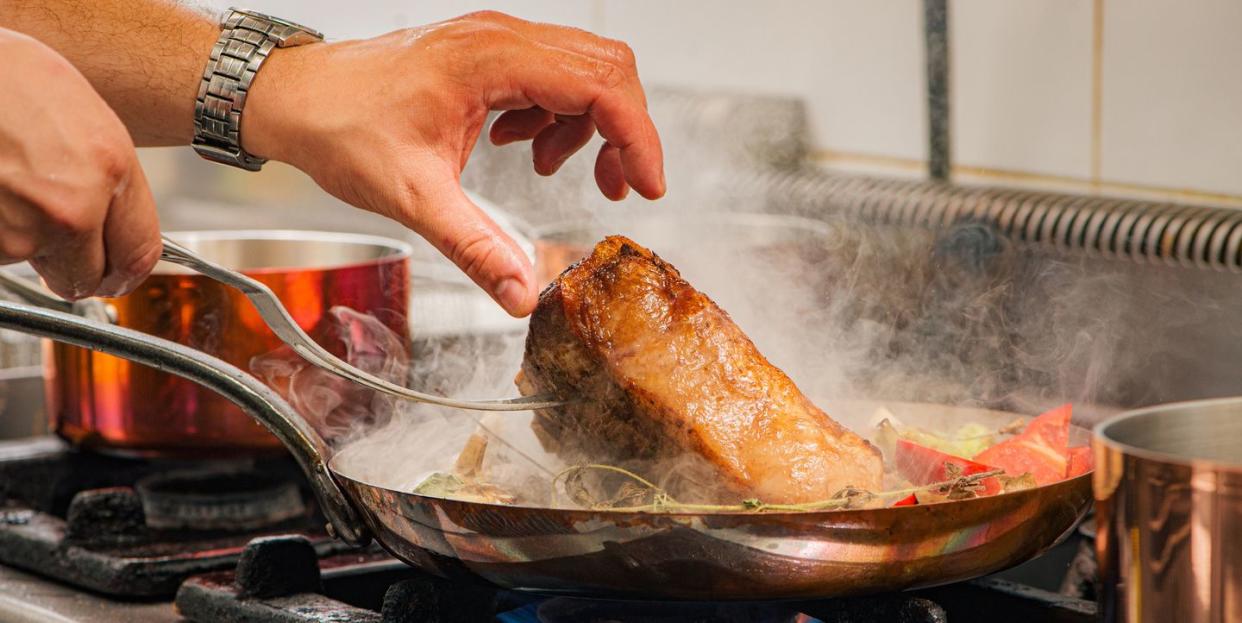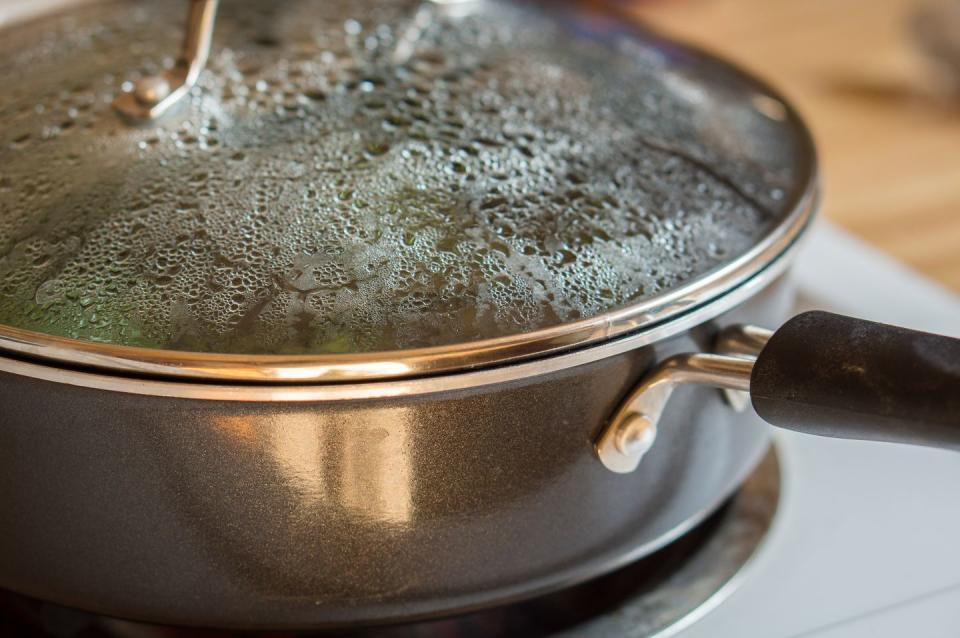There's Only One Right Way to Reheat Steak

Okay, let's get the obvious joke out of the way first: "Who leaves leftover steak?"
Hahahahahaha and the answer is plenty of people. Sometimes you just can't stuff down another morsel of mignon or hunk of hanger steak.
Honestly, leftover steak is a very excellent leftover to have. Unlike leftover macaroni and cheese, which tends to turn sort of gummy, leftover steak retains its texture and deliciousness. Unlike leftover hot dogs, leftover steak is incredibly versatile. And unlike leftover jokes about not having leftover steak, leftover steak can surprise you.

But that's only if you know the right way to reheat steak. Do it the wrong way and you'll end up with steak that turns out overcooked, burnt, bland, and boring.
Here's the right way to reheat steak.
No joke.
Step 1: Consider Not Reheating It

Cold steak, unlike cold pizza, is actually pretty good—if you know how to use it. Thinly sliced cold steak is delicious in a multitude of ways.
Slathered with horseradish, adorned with watercress, stacked with a slice of Swiss cheese and bookended by two slices of seeded rye or an onion roll
Fanned out atop a bed of cold peanut noodles and zig-zagged with Sriracha
Thrown into a salad with blue cheese and crumbled bacon
Very thinly sliced, arranged on a plate, and topped with arugula, Parmesan shavings, capers, and a drizzle each of really good olive oil and balsamic vinegar
But if you've considered all these options and are still like, "meh," then onwards!
Step 2: Break Out a Large Pan
Cast-iron, nonstick, stainless steel—whatever pan you choose just make sure it's a large one because that's key. Any pan 10-inches or larger is great. If you choose a dinky pan this whole reheating thing just isn't going to work out in your favor.
Step 3: Add Steak to the Pan

Place the meat so that one side of the steak is touching one wall of the pan. You really shouldn't add so much meat that it covers more than half of the pan. If that's the case, just reheat less steak. Otherwise this technique won't work.
Then—and this is the incredibly important part for those of you just scanning through this article and only reading maaaaaybe every other sentence—adjust the pan on the burner so that the portion of the pan holding the steak is furthest from the heat source.
This offset approach will soon make sense if you're thinking "Why doesn't this dude just use his freaking oven and be done with it?"
Step 4: Add Water to the Pan
On the other side of the pan pour in enough water so that it pools, but does not touch the steak. Usually about a 1/4 cup of water works, as long as you're not adding so much that the liquid begins to pool under the steak. That will result in soggy steak, which is something no one likes.
Step 5: Now Steam that Sucker
Put a lid on the pan and turn the heat on to medium.
What should happen, if you read that part I bolded earlier, is that the water will heat, and steam will begin to fill the pan.
Seriously, DUDE, why don't you just do this in the oven?
Because the oven operates via dry heat. Dry heat dries out leftover steak (or any meat or seafood, for that matter).
You could put a pan of water beneath the steak in the oven, but that's even fussier than this pan-based approach. That way will take you longer and you'll have less control over the reheating process.
By comparison, the moist heat you've now created in your enclosed pan gently coaxes the steak back to juicy perfection without overcooking the steak.

How long this whole process takes depends on the thickness of your leftover steak, how much leftover steak you have, and how hot you like your leftover steak.
As a rough guide, a 1-inch steak restored to warm will take you about 10 minutes to reheat—or about how long it takes for the 1/4 cup of water to evaporate in the pan.
If you have a thicker steak and/or want your meat hotter, just add more water. (It's okay to lift the lid to add some.) At that point you can also flip the steak to avoid overcooking one side due to any residual heat moving over to that side of the pan.
Step 6: Feast
There's no need to rest reheated steak—or at least I can't tell the difference between a rested reheated steak and an unrested reheated steak.
So just transfer the unrested reheated steak to a plate and dig in.
And then give the leftover steak jokes a rest.
You Might Also Like
